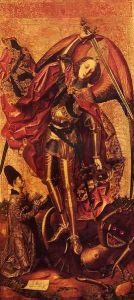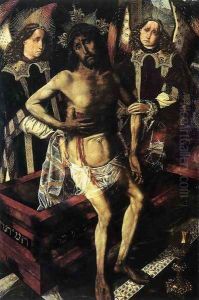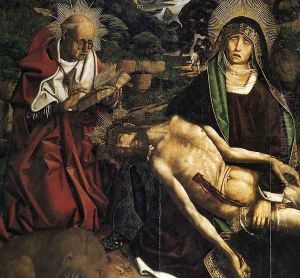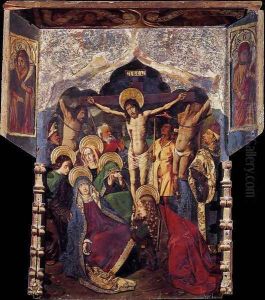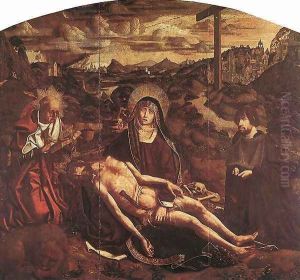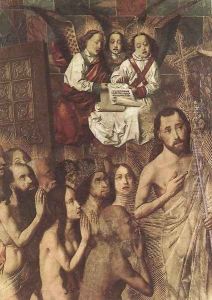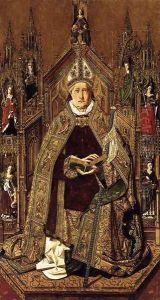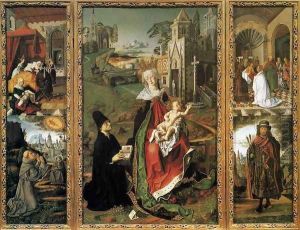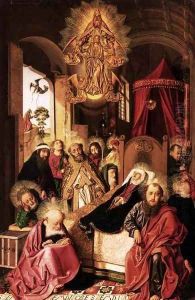Bartolome Bermejo Paintings
Bartolomé Bermejo was a Spanish painter who is regarded as one of the most accomplished artists of the Spanish Renaissance, although his exact birth and death dates are not well documented. He is believed to have been born around 1440 in Córdoba, Spain, and to have died around 1501. Bermejo is often celebrated for his skillful use of oil paints and his ability to create detailed, realistic works with strong emotional depth.
Bermejo’s early life and training remain largely unknown, but it is evident from his works that he was well-versed in the techniques of the Flemish school, which suggests he may have traveled to Flanders or had contact with Flemish artists active in Spain. His style is characterized by meticulous attention to detail, a rich color palette, and the sophisticated use of light and shadow, which he possibly learned from Northern European painting traditions.
Throughout his career, Bermejo worked in various parts of Spain, including Aragon and Catalonia. One of his most significant contributions to Spanish art was his introduction of Northern Renaissance techniques, which he blended with the local Spanish style. This fusion resulted in a unique and compelling aesthetic that set his work apart from his contemporaries.
Some of Bermejo’s most famous works include the 'Saint Dominic of Silos Enthroned as Bishop' (1474-1477), the 'Pietà' (1490), and the 'Triptych of the Virgin of Montserrat' (circa 1470-1475), which he created in collaboration with the artist Rodrigo de Osona. His paintings are noted for their religious themes, as was typical for the period, and they often featured saints and biblical narratives rendered with a high degree of realism.
Despite his apparent success and influence, little is known about Bermejo’s personal life, and he seems to have led a somewhat itinerant existence, never staying long in one place. His works, however, have left a lasting impression, and they can be found in various museums and collections, where they continue to be studied and admired for their beauty and technical mastery. Bermejo’s legacy lives on as a master of Spanish painting, and his influence can be seen in the works of subsequent generations of Spanish artists.
